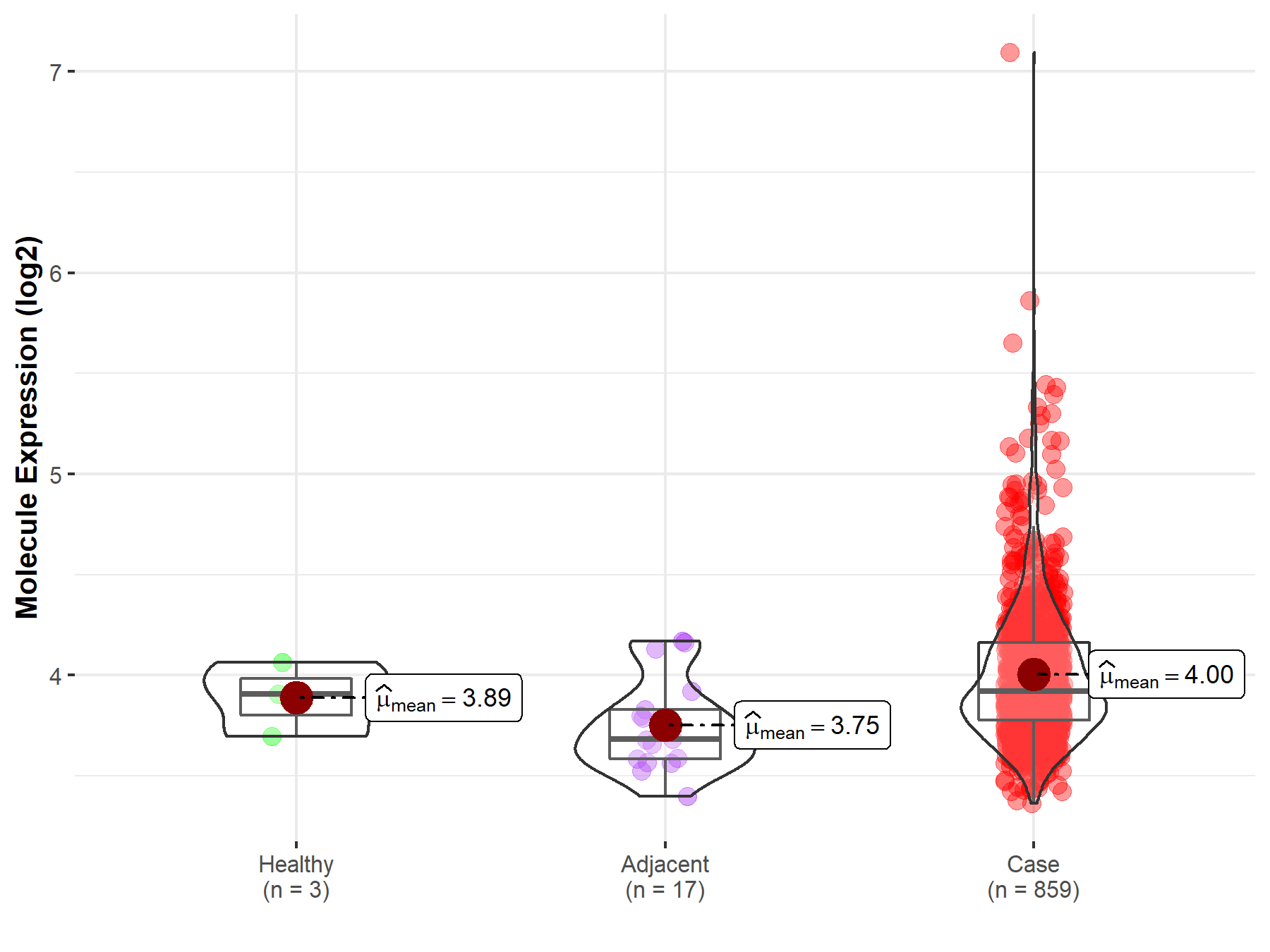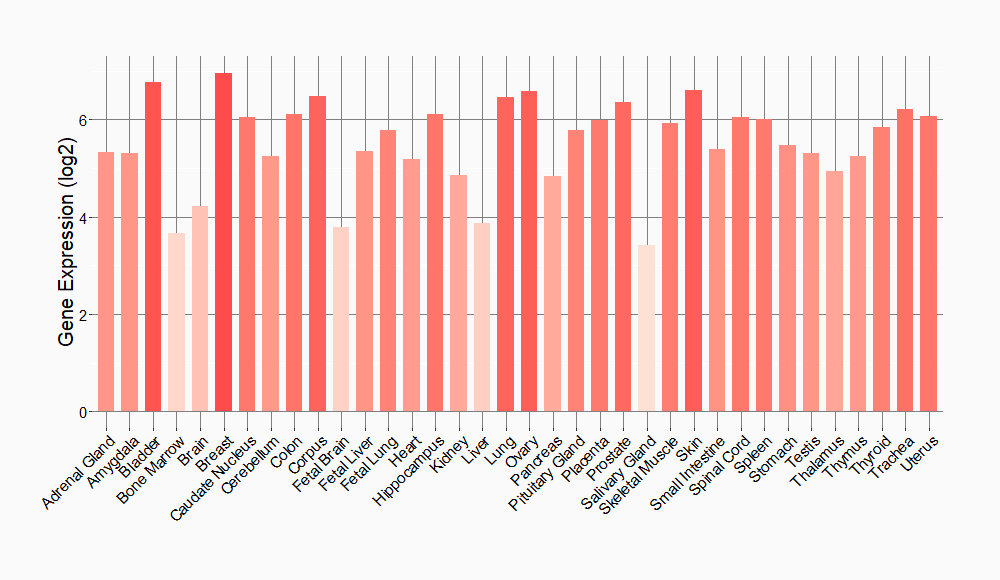Molecule Information
General Information of the Molecule (ID: Mol00598)
| Name |
Reversion-inducing cysteine-rich protein with Kazal motifs (RECK)
,Homo sapiens
|
||||
|---|---|---|---|---|---|
| Synonyms |
hRECK; Suppressor of tumorigenicity 15 protein; ST15
Click to Show/Hide
|
||||
| Molecule Type |
Protein
|
||||
| Gene Name |
RECK
|
||||
| Gene ID | |||||
| Location |
chr9:36036913-36124455[+]
|
||||
| Sequence |
MATVRASLRGALLLLLAVAGVAEVAGGLAPGSAGALCCNHSKDNQMCRDVCEQIFSSKSE
SRLKHLLQRAPDYCPETMVEIWNCMNSSLPGVFKKSDGWVGLGCCELAIALECRQACKQA SSKNDISKVCRKEYENALFSCISRNEMGSVCCSYAGHHTNCREYCQAIFRTDSSPGPSQI KAVENYCASISPQLIHCVNNYTQSYPMRNPTDSLYCCDRAEDHACQNACKRILMSKKTEM EIVDGLIEGCKTQPLPQDPLWQCFLESSQSVHPGVTVHPPPSTGLDGAKLHCCSKANTST CRELCTKLYSMSWGNTQSWQEFDRFCEYNPVEVSMLTCLADVREPCQLGCRNLTYCTNFN NRPTELFRSCNAQSDQGAMNDMKLWEKGSIKMPFINIPVLDIKKCQPEMWKAIACSLQIK PCHSKSRGSIICKSDCVEILKKCGDQNKFPEDHTAESICELLSPTDDLKNCIPLDTYLRP STLGNIVEEVTHPCNPNPCPANELCEVNRKGCPSGDPCLPYFCVQGCKLGEASDFIVRQG TLIQVPSSAGEVGCYKICSCGQSGLLENCMEMHCIDLQKSCIVGGKRKSHGTSFSIDCNV CSCFAGNLVCSTRLCLSEHSSEDDRRTFTGLPCNCADQFVPVCGQNGRTYPSACIARCVG LQDHQFEFGSCMSKDPCNPNPCQKNQRCIPKPQVCLTTFDKFGCSQYECVPRQLACDQVQ DPVCDTDHMEHNNLCTLYQRGKSLSYKGPCQPFCRATEPVCGHNGETYSSVCAAYSDRVA VDYYGDCQAVGVLSEHSSVAECASVKCPSLLAAGCKPIIPPGACCPLCAGMLRVLFDKEK LDTIAKVTNKKPITVLEILQKIRMHVSVPQCDVFGYFSIESEIVILIIPVDHYPKALQIE ACNKEAEKIESLINSDSPTLASHVPLSALIISQVQVSSSVPSAGVRARPSCHSLLLPLSL GLALHLLWTYN Click to Show/Hide
|
||||
| Function |
Functions together with ADGRA2 to enable brain endothelial cells to selectively respond to Wnt7 signals (WNT7A or WNT7B). Plays a key role in Wnt7-specific responses: required for central nervous system (CNS) angiogenesis and blood-brain barrier regulation. Acts as a Wnt7-specific coactivator of canonical Wnt signaling by decoding Wnt ligands: acts by interacting specifically with the disordered linker region of Wnt7, thereby conferring ligand selectivity for Wnt7. ADGRA2 is then required to deliver RECK-bound Wnt7 to frizzled by assembling a higher-order RECK-ADGRA2-Fzd-LRP5-LRP6 complex. Also acts as a serine protease inhibitor: negatively regulates matrix metalloproteinase-9 (MMP9) by suppressing MMP9 secretion and by direct inhibition of its enzymatic activity. Also inhibits metalloproteinase activity of MMP2 and MMP14 (MT1-MMP).
Click to Show/Hide
|
||||
| Uniprot ID | |||||
| Ensembl ID | |||||
| HGNC ID | |||||
| Click to Show/Hide the Complete Species Lineage | |||||
Type(s) of Resistant Mechanism of This Molecule
Drug Resistance Data Categorized by Drug
Approved Drug(s)
2 drug(s) in total
| Drug Resistance Data Categorized by Their Corresponding Mechanisms | ||||
|
|
||||
| Disease Class: Gastric cancer | [1] | |||
| Resistant Disease | Gastric cancer [ICD-11: 2B72.1] | |||
| Resistant Drug | Cisplatin | |||
| Molecule Alteration | Expression | Down-regulation |
||
| Experimental Note | Revealed Based on the Cell Line Data | |||
| Cell Pathway Regulation | AKT/ERK signaling pathway | Activation | hsa04010 | |
| In Vitro Model | BGC-823 cells | Gastric | Homo sapiens (Human) | CVCL_3360 |
| MGC-803 cells | Gastric | Homo sapiens (Human) | CVCL_5334 | |
| SGC7901 cells | Gastric | Homo sapiens (Human) | CVCL_0520 | |
| AGS cells | Gastric | Homo sapiens (Human) | CVCL_0139 | |
| MkN-45 cells | Gastric | Homo sapiens (Human) | CVCL_0434 | |
| MkN28 cells | Gastric | Homo sapiens (Human) | CVCL_1416 | |
| In Vivo Model | Nude mouse xenograft model | Mus musculus | ||
| Experiment for Molecule Alteration |
Western blot analysis | |||
| Experiment for Drug Resistance |
MTS assay; Matrigel transwell assay | |||
| Mechanism Description | miR590-5p regulates gastric cancer cell growth and chemosensitivity through RECk and the AkT/ERk pathway. RECk is a direct target of miR590-5p, knockdown of RECk accelerated cell proliferation and motility and decreased the drug sensitivity.The AkT/ERk and STAT3 signaling pathways were activated by miR590-5p overexpression. | |||
| Drug Sensitivity Data Categorized by Their Corresponding Mechanisms | ||||
|
|
||||
| Disease Class: Esophageal cancer | [2] | |||
| Sensitive Disease | Esophageal cancer [ICD-11: 2B70.1] | |||
| Sensitive Drug | Cisplatin | |||
| Molecule Alteration | Expression | Up-regulation |
||
| Experimental Note | Identified from the Human Clinical Data | |||
| Cell Pathway Regulation | Cell proliferation | Inhibition | hsa05200 | |
| In Vitro Model | ECA-109 cells | Esophagus | Homo sapiens (Human) | CVCL_6898 |
| TE-1 cells | Esophagus | Homo sapiens (Human) | CVCL_1759 | |
| EC9706 cells | Esophagus | Homo sapiens (Human) | CVCL_E307 | |
| Experiment for Molecule Alteration |
Western blot analysis | |||
| Experiment for Drug Resistance |
MTT assay; CCK8 assay | |||
| Mechanism Description | Ectopic overexpression of miR-96 in TE-1 or ECa-109 contributed to tumor growth in xenograft mouse models. Furthermore, up-regulation of miR-96 could reduce the susceptibilities of EC cells to chemotherapy or radiotherapy. RECk was identified as a target of miR-96 and RECk overexpressing could abrogate the growth of EC cells induced by miR-96. Taken together, miR-96 serves as an oncogene role in EC cells through downregulating RECk. | |||
| Drug Resistance Data Categorized by Their Corresponding Mechanisms | ||||
|
|
||||
| Disease Class: Gastric cancer | [1] | |||
| Resistant Disease | Gastric cancer [ICD-11: 2B72.1] | |||
| Resistant Drug | Paclitaxel | |||
| Molecule Alteration | Expression | Down-regulation |
||
| Experimental Note | Revealed Based on the Cell Line Data | |||
| Cell Pathway Regulation | AKT/ERK signaling pathway | Activation | hsa04010 | |
| In Vitro Model | BGC-823 cells | Gastric | Homo sapiens (Human) | CVCL_3360 |
| MGC-803 cells | Gastric | Homo sapiens (Human) | CVCL_5334 | |
| SGC7901 cells | Gastric | Homo sapiens (Human) | CVCL_0520 | |
| AGS cells | Gastric | Homo sapiens (Human) | CVCL_0139 | |
| MkN-45 cells | Gastric | Homo sapiens (Human) | CVCL_0434 | |
| MkN28 cells | Gastric | Homo sapiens (Human) | CVCL_1416 | |
| In Vivo Model | Nude mouse xenograft model | Mus musculus | ||
| Experiment for Molecule Alteration |
Western blot analysis | |||
| Experiment for Drug Resistance |
MTS assay; Matrigel transwell assay | |||
| Mechanism Description | miR590-5p regulates gastric cancer cell growth and chemosensitivity through RECk and the AkT/ERk pathway. RECk is a direct target of miR590-5p, knockdown of RECk accelerated cell proliferation and motility and decreased the drug sensitivity.The AkT/ERk and STAT3 signaling pathways were activated by miR590-5p overexpression. | |||
Disease- and Tissue-specific Abundances of This Molecule
ICD Disease Classification 02

| Differential expression of molecule in resistant diseases | ||
| The Studied Tissue | Esophagus | |
| The Specified Disease | Esophageal cancer | |
| The Expression Level of Disease Section Compare with the Adjacent Tissue | p-value: 4.48E-01; Fold-change: -1.96E-01; Z-score: -5.87E-01 | |
|
Molecule expression in the normal tissue adjacent to the diseased tissue of patients
Molecule expression in the diseased tissue of patients
|
||
| Disease-specific Molecule Abundances |

|
Click to View the Clearer Original Diagram |
| Differential expression of molecule in resistant diseases | ||
| The Studied Tissue | Gastric tissue | |
| The Specified Disease | Gastric cancer | |
| The Expression Level of Disease Section Compare with the Healthy Individual Tissue | p-value: 3.89E-01; Fold-change: 1.52E-02; Z-score: 8.26E-02 | |
| The Expression Level of Disease Section Compare with the Adjacent Tissue | p-value: 3.51E-04; Fold-change: 2.39E-01; Z-score: 1.04E+00 | |
|
Molecule expression in the normal tissue adjacent to the diseased tissue of patients
Molecule expression in the diseased tissue of patients
Molecule expression in the normal tissue of healthy individuals
|
||
| Disease-specific Molecule Abundances |

|
Click to View the Clearer Original Diagram |
Tissue-specific Molecule Abundances in Healthy Individuals


|
||
References
If you find any error in data or bug in web service, please kindly report it to Dr. Sun and Dr. Zhang.
